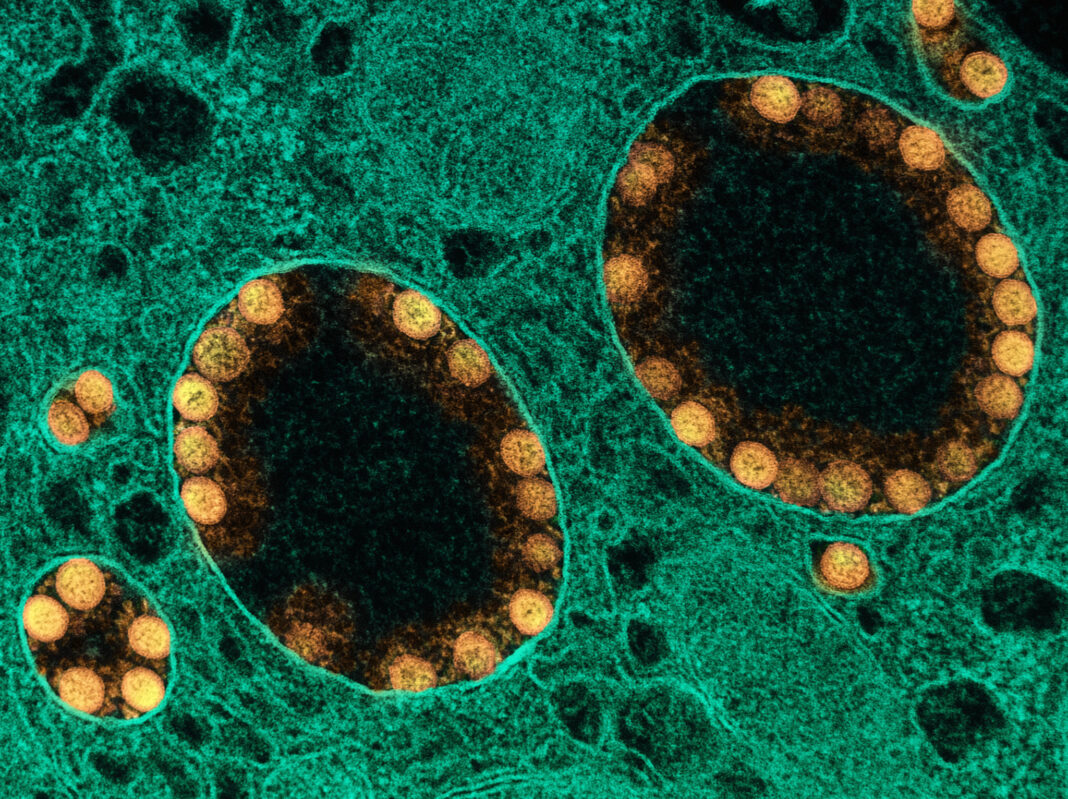The Centers for Disease Control’s weekly variant proportions data update today offered the clearest indication yet that a new Omicron strain dubbed BA. 4. 6 may be able to outcompete now-dominant BA.
5 in the United States. While BA. 4.
6 has been in the U. S. since at least May, it remained below 2% of new cases sequenced until July, when it gradually began to rise, even as BA.
5 continued to do the same. As of this week’s CDC reporting, it currently stands at 7. 5%.
But the real wrinkle comes when the variant proportions are broken out regionally. Variant growth across the U. S.
CDC In the area defined primarily by California, Arizona and Nevada, BA. 4. 6 lags behind even BA.
4, with shares of 2. 8% and 3. 3%, respectively.
BA. 5 in the region stands at 93% and rising. Related Story Google Covid Outbreak Among Los Angeles Employees Grows – Updated Compare that to the CDC-grouped region of Nebraska, Iowa, Kansas and Missouri, where BA.
4. 6 has risen to 17. 2% of all new cases sequenced, and BA.
5 actually fell for the first time this past week to 78. 5%. It peaked at 80% there in the first week of August and has fallen slightly in the three weeks since.
During same that time frame BA. 4. 6 has nearly doubled in those states from 8.
7%. Variant growth in Nebraska, Iowa, Missouri and Kansas CDC The good news is that in all four of those states Covid numbers are down across the board. By one analysis of GISAID data, the new Omicron variant has a 16% growth advantage over BA.
5, which makes it all the more bizarre that it has beat out BA. 5 in some areas of the U. S.
while making little progress in others. BA. 4.
6 growth advantage over BA. 5 Cov-Spectrum. org The reasons for these region differences are unclear.
Los Angeles Public Health Director Barbara Ferrer told the Los Angeles Times last week. “I don’t know if there’s some relationship to the environment or the weather or particular conditions, including the vaccination status of the residents in those communities, as well as prior infections that folks have experienced,” she said. “It’s hard for us to really tease it all out from California here.
I do know we need to watch it carefully. ” According to data cited by the Times, “BA. 4.
6 constitutes just 1. 5% of cases in L. A.
County, a rate that remains relatively the same compared to the prior week. ” Variant proportions across the U. S.
, with BA. 4. 6 in blue CDC GISAID data shows that in many other countries where BA.
4. 6 has made significant inroads, it quickly faded in the face of another heavily-mutated new Omicron variant, dubbed BA. 2.
75. It was first sequenced in May in India, where it has spread rapidly. According to the World Health Organization, “BA.
2. 75 has nine additional mutations in the spike compared to BA. 2.
” Some of those adaptations could allow the virus to bind onto cells more efficiently, said Matthew Binnicker, director of clinical virology at the Mayo Clinic in Rochester, Minnesota. In countries like Spain, Germany, the U. K.
, Ireland and Italy where BA. 4. 6 initially made way against near-uniform dominance by BA.
5, BA. 2. 75 has beat back both of those predecessors and become dominant.
Omicron BA. 4. 6 was short-lived: virtually everywhere it will be outcompeted by the fitter BA.
2. 75 & BF. 7 / BA.
5. 2. 1.
7 that emerged in the meantime. All lineages still picking up mutations though, so exact mix in fall & winter hard to predict. pic.
twitter. com/kxRnv9SuhP — Tom Wenseleers (@TWenseleers) August 21, 2022 While BA. 2.
75 is present in the U. S. , it is barely a blip.
It’s not even specifically tracked on the CDC variant proportions dashboard , but rolled in with parent lineage BA. 2, which is currently at 0%. L.
A. , one of the nation’s largest counties, has sequenced just four cases to date. Whether BA.
2. 75 makes inroads here this fall and winter is anyone’s guess. .
From: deadline
URL: https://deadline.com/2022/08/new-covid-variant-ba-4-6-u-s-midwest-1235103594/



